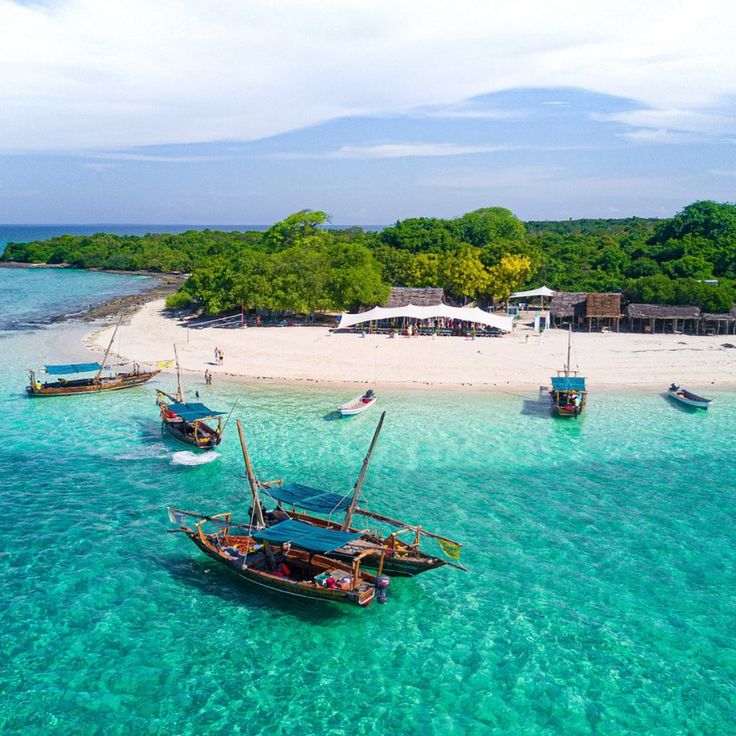Zanzibar, often called the Spice Island, draws travelers from around the world with its pristine beaches, spice-scented plantations, and centuries of cultural exchange. The island lies just off Tanzania’s coast in the Indian Ocean. It offers a rare blend of natural beauty, rich history, and vibrant traditions. Whether you want to relax by the turquoise sea, wander through historic alleys, or dive into local culture, Zanzibar delivers unforgettable experiences. Exploring Zanzibar
What is Zanzibar best known for?
Travelers recognize Zanzibar for its white sandy beaches, spice trade history, and diverse culture. Historically, the island served as a major trading hub for spices, ivory, and other goods. Even today, visitors can walk through spice plantations and witness how cloves, cinnamon, nutmeg, and black pepper grow, offering a direct link to its storied past. Exploring Zanzibar
Beyond its history, Zanzibar is equally famous for its stunning beaches such as Nungwi, Kendwa, and Paje. These pristine stretches of sand and turquoise waters attract visitors seeking both relaxation and adventure, from sunbathing and dhow cruises to kitesurfing and diving.
Moreover, the island’s cultural richness stands out. Swahili traditions, Arab influences, and Indian heritage intertwine to shape the local way of life. As a result, Zanzibar becomes more than just a beach getaway—it is a destination that beautifully blends multiple worlds into one unforgettable experience. Exploring Zanzibar
Is Zanzibar worth visiting?
Zanzibar deserves a place on every traveler’s list. Not only does the island combine culture, history, and natural beauty, but it also offers a diversity of experiences that few destinations can match. For beach lovers, Zanzibar rivals the Maldives and Seychelles, yet at the same time, it adds unique charm with spice markets and Swahili architecture.
For those who crave culture, Stone Town provides an immersive experience with its narrow alleys, intricately carved wooden doors, and bustling bazaars. Meanwhile, adventure seekers can enjoy world-class diving, snorkeling, kite surfing, and sailing across the turquoise waters. In addition, many visitors choose to pair their Zanzibar trip with a Tanzanian safari, creating the perfect balance of thrilling wildlife encounters and serene island relaxation.
What are the top attractions in Stone Town?
Stone Town, a UNESCO World Heritage Site, serves as the historic and cultural heart of Zanzibar. You can explore winding streets, visit colorful markets, and admire centuries-old architecture. Highlights include:
- House of Wonders (Beit-al-Ajaib): Once the Sultan’s ceremonial palace, it now showcases Zanzibari history.
- Old Fort (Ngome Kongwe): Built in the 17th century by the Omanis, the fort now hosts cultural events and shops.
- Darajani Market: Bustling with spices, fresh produce, and local crafts.
- Forodhani Gardens Night Market: Famous for Zanzibar pizza, sugarcane juice, and grilled seafood.
- Palace Museum (Beit-al-Sahel): A former royal residence filled with stories of Zanzibar’s ruling past.
Walking through Stone Town immerses you in centuries of cultural exchange and vibrant daily life.
Which are the best beaches in Zanzibar?
Zanzibar’s beaches rank among the finest in the world, each offering its own charm.
- Nungwi Beach: On the northern tip, Nungwi draws visitors with its lively atmosphere, turquoise waters, and sunset views.
- Kendwa Beach: Calm waters make Kendwa perfect for swimming and leisurely walks.
- Paje Beach: Located on the southeast coast, Paje attracts kite surfers from around the globe.
- Matemwe Beach: Quieter and more secluded, Matemwe offers views of Mnemba Atoll and a peaceful escape.
- Bwejuu Beach: Ideal for honeymooners and couples seeking tranquility.
You can sunbathe, snorkel, dive, or sail on traditional dhows along these pristine stretches.
What activities can you do in Zanzibar?
Zanzibar provides endless opportunities for adventure and cultural immersion. Popular activities include:
- Spice Tours: Walk through plantations and discover how cloves, nutmeg, and cinnamon grow.
- Snorkeling and Diving: Explore coral reefs at Mnemba Atoll, Chumbe Island, and Mafia Island.
- Dhow Sailing: Cruise the Indian Ocean on traditional wooden dhows at sunset.
- Wildlife Encounters: Spot red colobus monkeys in Jozani Forest.
- Prison Island: Visit giant Aldabra tortoises and learn about the island’s history.
- Cultural Experiences: Join cooking classes, explore villages, and enjoy Swahili music and dance.
Zanzibar combines nature, culture, and adventure, making it more than just a beach destination.
When is the best time to visit Zanzibar?
Zanzibar enjoys warm weather all year, but some months offer better conditions than others.
- June to October (Dry Season): Sunny skies, low humidity, and perfect for beach holidays.
- November (Short Rains): Light showers keep crowds low but rarely spoil the trip.
- December to February (Hot Season): Warm and lively, popular with holiday travelers.
- March to May (Long Rains): Heavy rainfall makes this the quietest season.
Travelers often choose June to October or December to February for the best mix of sunshine and outdoor activities.
How do you get to Zanzibar from mainland Tanzania?
Reaching Zanzibar from mainland Tanzania is easy.
- By Air: Flights from Dar es Salaam take only 30 minutes. The island also connects with Nairobi, Addis Ababa, Doha, and Istanbul.
- By Ferry: High-speed ferries from Dar es Salaam take about 2 hours and provide scenic ocean views.
Most safari-goers fly directly from the Serengeti or Arusha to Zanzibar, creating a seamless journey from the savannah to the sea.
Is Zanzibar safe for tourists?
Zanzibar welcomes tourists and remains a generally safe destination. Petty theft can occur in busy markets, so keep an eye on your belongings. In villages and Stone Town, respect local customs by dressing modestly. Resorts and beaches are secure, but avoid walking alone in unfamiliar areas late at night. With basic precautions, you can explore Zanzibar confidently.
Do you need a visa to travel to Zanzibar?
Yes, most travelers need a Tanzanian visa to enter Zanzibar. You can apply online for an e-visa or get one on arrival at the airport. The tourist visa usually allows a 90-day stay. Ensure your passport is valid for at least six months and carry proof of return or onward travel. Always check the updated entry rules before your trip.
What is the weather like in Zanzibar year-round?
Zanzibar has a tropical climate that stays warm throughout the year. Temperatures usually range from 25°C to 32°C (77°F to 89°F).
- Dry Season (June–October): Sunny, less humid, and perfect for the beach.
- Hot Season (December–February): Warm, sunny, and festive.
- Rainy Seasons: Short rains in November and heavier rains from March to May.
The island’s tropical weather ensures great beach conditions most months of the year.
What language is spoken in Zanzibar?
The official language of Zanzibar is Swahili (Kiswahili). English is widely spoken in hotels, restaurants, and tourist areas. Arabic remains important within the local Muslim community. Visitors who learn a few Swahili greetings, such as “Jambo” (Hello) or “Asante” (Thank you), often connect better with locals.
What food is Zanzibar famous for?
Zanzibar’s cuisine reflects its spice heritage and cultural diversity. Popular dishes include:
- Zanzibar Pizza: A stuffed street-food delicacy sold at Forodhani Gardens.
- Seafood: Fresh lobster, octopus, prawns, and fish caught daily.
- Pilau and Biryani: Fragrant rice dishes infused with spices.
- Urojo Soup: A tangy mix of potatoes, fritters, and chutneys.
- Coconut Curries: Rich, flavorful dishes served with rice or bread.
Food tours and night markets let you taste Zanzibar’s unique culinary traditions.
How many days do you need in Zanzibar?
Plan to spend five to seven days in Zanzibar to see its highlights. This gives you time to explore Stone Town, tour spice plantations, enjoy beach days, and try water sports. If you combine Zanzibar with a safari, four to five days work well. Honeymooners and long-term travelers often stay up to two weeks for a deeper, slower experience.
Can you do a safari and a Zanzibar trip together?
Yes, travelers often combine a Tanzanian safari with a Zanzibar getaway. You can spot lions, elephants, and wildebeests in Serengeti or Ngorongoro, then fly directly to Zanzibar for a relaxing beach escape. This classic “bush and beach” itinerary ranks as one of East Africa’s most popular travel experiences. Exploring Zanzibar
What is Zanzibar’s history and cultural significance?
Zanzibar’s history tells a story of trade, culture, and power shifts. For centuries, Arab, Persian, Indian, and European traders passed through its ports. As a result, the island became a major center for the spice trade and, sadly, the slave trade. Later on, the Sultanate of Oman ruled the island until eventually the British declared it a protectorate. Finally, in 1964, Zanzibar united with Tanganyika to form modern Tanzania.
This long history has profoundly shaped Zanzibar’s culture, language, food, and traditions. Today, the island reflects strong African roots while also blending Arab and Indian influences. Consequently, Zanzibar stands out as one of Africa’s most unique cultural destinations. Exploring Zanzibar
Conclusion
Zanzibar combines paradise beaches, cultural richness, and adventure in one destination. To begin with, travelers can explore the historic streets of Stone Town, where winding alleys, bustling markets, and centuries-old architecture bring history to life. In addition, the island offers incredible marine experiences, from snorkeling and diving to swimming alongside vibrant marine life at Mnemba Atoll. Whether you are planning a honeymoon, a safari extension, or a family holiday, Zanzibar provides activities and attractions suited for every type of traveler. As a result, the island delivers a unique blend of history, natural beauty, and unforgettable memories. Exploring Zanzibar




